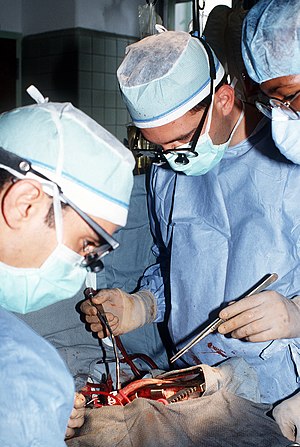While there are no doubt many excellent doctors, the pressures of production and economic consequences produce surgical errors far beyond that which people might actually think occur. The answer is not to deny the problem but to confront these unfortunate circumstances Head on. The article below once again demonstrates the need for open discussion and perhaps more importantly the need for every family to be vigilant and asking questions in order to protect their loved ones.
By LAURA LANDRO
Researchers at Johns Hopkins say that despite efforts to improve surgical safety, 4,044 so-called “never events,” including leaving a foreign object such as a sponge inside a patient’s body, occur in the U.S. each year. Laura Landro reports on The News Hub. Photo: AP.
They are known as “never events”—the kind of mistake that should never happen in medicine, like operating on the wrong patient or sewing someone up with a sponge still inside—yet new research suggests that they happen with alarming frequency.
Surgeons make such mistakes more than 4,000 times a year in the U.S., according to a study led by Johns Hopkins University School of Medicine, published online in the journal Surgery. The study, using data in the National Practitioner Data Bank, a federal repository of medical-malpractice judgments and out-of-court settlements, looked at cases involving leaving an object inside a patient, wrong-site surgeries, wrong procedures and wrong-patient surgeries.
Avoidable Mistakes
Researchers identified 9,744 malpractice payments tied to surgical ‘never events’ between September 1990 and September 2010. A breakdown:
Foreign object left behind 49.8%
Wrong patient 0.3%
Between 1990 and 2010, malpractice payments for such ‘never events’ reported to a database totaled $1.3 billion.
Wrong procedures were the costliest ‘never events,’ with a median payment of $106,777.
The lowest payouts were for foreign objects left behind, with a median payment of $33,953.
Source: Johns Hopkins
In the 9,744 cases identified between 1990 and 2010, just over 6% of patients died, 32.9% had permanent injury and 59.2% suffered temporary injury, according to the researchers. Based on the number of paid claims and a prior study that estimated that only 12% of surgical adverse events result in indemnity payments, the researchers arrived at an estimate that at least 4,082 mistakes actually occur in the U.S. each year.
Martin Makary, lead author of the study and an associate professor of surgery at Johns Hopkins, said his team’s estimates are likely low; previous studies have shown that many patients never file claims after errors. And not all items left behind after surgery are discovered. Typically, they are found only when a patient experiences a complication after surgery, such as an infection, and efforts are made to find out why, he said. As many as one in three or four retained sponges may never be discovered, he added.
Unlike some complications in medicine, the surgical mistakes are “totally preventable,” according to Dr. Makary.
By law, hospitals are required to report events that result in a settlement or judgment to the database. Overall, annual rates of surgical “never events” reported to the database have decreased, Dr. Makary said, but that may be in part because hospitals can decide not to name individual doctor on settlements under some circumstances, and thus not report to the practitioner database.
More
- Ten Ways Patients Get Treated Better
- The Secret to Fighting Infections
- How to Stop Hospitals From Killing Us
Hospitals have been working for years on safety programs to reduce such events, including “timeouts” before surgery to make sure they have the right patient or are about to operate on the right body part. New technology, such as bar-coding and wandlike scanners waved over a patient, allows surgical teams to account for all sponges and other products used in a procedure. Other steps include using indelible ink to mark the site of the surgery before the patient goes under anesthesia.
But not all hospitals use such technology, and even when prevention protocols are followed, mistakes can be made.
Nancy Foster, vice president of safety and quality for the American Hospital Association, noted that the study covers years before many prevention efforts were put in place that have reduced such incidents, which remain relatively rare among the more than 53 million surgeries annually in the U.S.
However, she said, “Clearly, every hospital leader in the country knows one such incident is too many, and now the challenge is to make sure we understand which strategy we can implement that would be effective in diminishing the numbers even further.” She said there weren’t data yet to support a decline in incidents.
Harvard University patient-safety expert Lucian Leape said the study has limitations: It is not an actual count of events but rather an extrapolation from malpractice claims and reports to the database. But while it is “dangerous to get away from actual measurement, on the other hand, the results are probably in the ballpark,” he said.
Dr. Leape said steeper financial penalties to hospitals could be effective in improving safety. The Centers for Medicare and Medicaid Services currently penalize hospitals for preventable events by withholding payments for issues such as repeat surgeries to fix mistakes or treat preventable infections. If hospitals were fined $100,000 for a wrong-site surgery, and double that for a repeat incident, “it would make the news, and they would get serious about it,” Dr. Leape said





